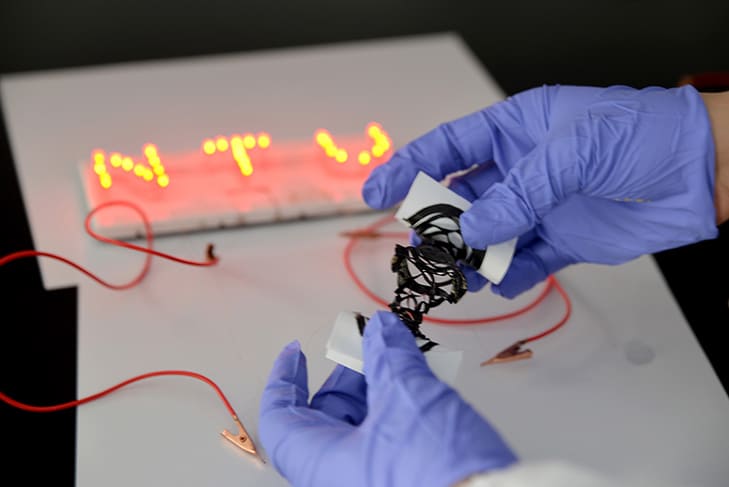"Editable" fabric-like supercapacitor provides power even when cut, folded or stretched
Singapore researchers develop supercapacitor suitable for versatile wearable electronics
Supercapacitors are electronic components which can act like batteries, storing and releasing charge quickly. Flexible supercapacitors have been made before, but can only be shaped and stretched in predetermined ways, limiting their suitability for clothing applications. The Singapore team, from the School of Materials Science and Engineering of Nanyang Technical University, has been working on this topic for some years, and now claims to have developed a far more versatile material.

Rather than only being suitable for predetermined designs and structures, the shape and structure of the new material can be changed after manufacture without compromising its function as a power source, the team said in a paper in the journal Advanced Materials. It can be stretched in multiple directions, and when made into a honeycomb-like structure it can store electrical charge four times higher than other stretchy supercapacitors. Moreover, when stretched to four times its original length, it retains 98 per cent of its original charge capacity, even after 10,000 stretch-and-release cycles.
Register now to continue reading
Thanks for visiting The Engineer. You’ve now reached your monthly limit of news stories. Register for free to unlock unlimited access to all of our news coverage, as well as premium content including opinion, in-depth features and special reports.
Benefits of registering
-
In-depth insights and coverage of key emerging trends
-
Unrestricted access to special reports throughout the year
-
Daily technology news delivered straight to your inbox










Water Sector Talent Exodus Could Cripple The Sector
Maybe if things are essential for the running of a country and we want to pay a fair price we should be running these utilities on a not for profit...